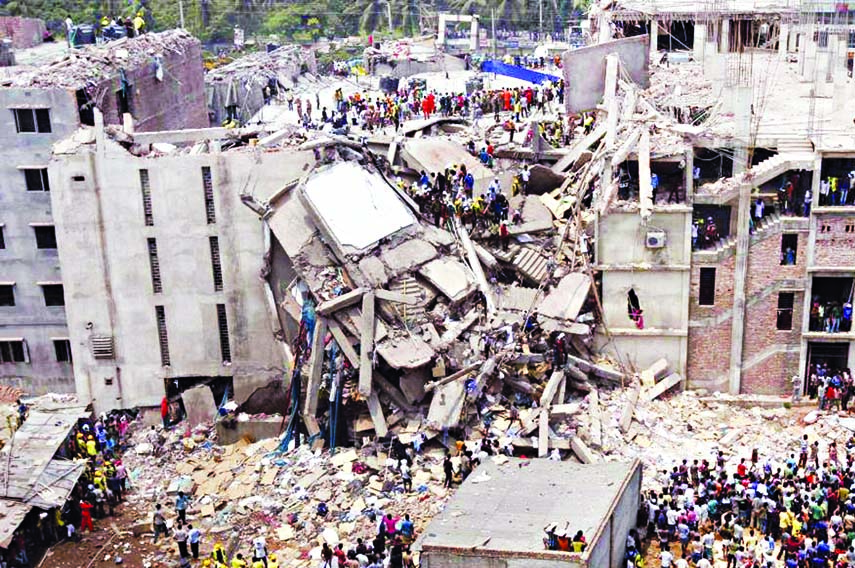
The Telegraph :
It was on this day five years ago that cracks began to appear in the walls of Rana Plaza, the ill-fated complex of clothes factories and shops in Savar, 15 miles outside the Bangladeshi capital of Dhaka.
Though employees were sent home, they returned to work the following day and around 3,100 were inside when the building began to give way.
After a power outage, large generators on the roof had been fired up – sending powerful vibrations through the structure and creating more cracks in load-bearing columns.
That caused the building’s floors to collapse in on themselves, trapping thousands of workers in a concrete concertina that ultimately killed 1,138 people and left many others with life-changing injuries.
The sorry episode, one of the deadliest industrial accidents in history, shocked the world. And as clothes labels began to be plucked from the rubble, it left many major fashion brands, including Britain’s Primark, Matalan and Bonmarche, with questions to answer. The disaster has come to be the most potent symbol of how fashion chains lost control of their supply chains as they offshored manufacturing in the pursuit of lower costs. Even those brands who were not implicated were left with a startling reminder of how much harm they could cause by not keeping their supply chains in check.
“There is no doubt that the industry got a huge wake-up call,” says Peter McAllister, who runs the Ethical Trading Initiative, a collection of brands, trade unions and NGOs that campaign for workers’ rights.
Fashion
Fashion brands have supply chains that criss-cross the world including countries such as Bangladesh, China and the Philippines (pictured) Credit: Reuters
The response in Bangladesh itself was swift with dozens of brands, including Bonmarche, Matalan and Primark, signing up to a new legally binding agreement on worker safety two months later. History is littered with deals not worth the paper they are written on, but the Bangladesh Accord on Fire and Building Safety has by most accounts been transformative.
The tie-up included an agreement on common building standards enforced by an independent inspection programme, with factories that ignored the rules being barred from working with any of the brands involved. It also forced manufacturers to create elected health and safety committees.
A separate group set up by 17 North American retailers, the Alliance for Bangladesh Worker Safety, has taken a similar approach. Warwick Business School’s Professor Jimmy Donaghey, who has visited Bangladesh eight times since the disaster, says the accord has had an “extremely significant” impact, providing a “massive incentive” for manufacturers to raise standards. “Employers in Bangladesh who have undergone oversight by the accord and alliance now can claim to be among the safest, if not the safest, in the world,” he adds.
“There are still far too many who will hide behind contracts if it suits them”Peter McAllister, the Ethical Trading Initative
Some brands have gone even further, with Primark embarking on its own programme of building inspections and hiring an in-house structural engineer as part of its ethical trade team. But while great leaps forward have been made when it comes to building safety, it would be fanciful to suggest the global fashion supply chain is anywhere near as clean as it should be.
“Mainly we are cheap labour – that is why we are scared; we need money, we need to survive,” says Nazma Akter, who began work as a seamstress in a Bangladeshi factory aged just 11 and now runs the Sommilito Garments Sramik Federation trade union.
Those on factory floors, predominantly women, are often subjected to harassment and abuse, especially if they try to organise unions, she says, adding: “Women are still treated like they should not talk.”

